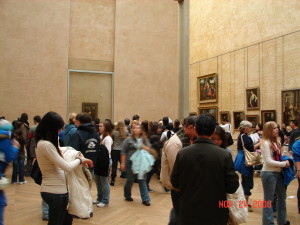Where do I even begin? As I can see from those who posted before me, I am not alone in feeling conflicted about the reading. It left me with many questions, first of all, how I can move forward? Most of the ideas presented were about participatory techniques, increasing the use of social media and technology, and embracing co-creation within institutions- all foreign concepts to me. When reading about these efforts, issues arose for me because I had difficulty visualizing such exhibits and had never encountered them before.
Of course I understand the need to reach more diverse audiences and dilute the idea that museums are the “end-all” historical authority, but I found my logical goals as a historian clashing with my experiences as a museum patron. As a historian, I agree that content should be presented in a way that allows visitors to feel personally connected to history, and foster active engagement with unique dialogues. You hope that museums become bustling places that people are not intimidated to visit, while they experience wonderment with challenges to perspectives that normally would not occur. On the other hand, I was constantly thinking about my own museum experiences. Contrastingly, as I patron I relish the “empty” days at museums, which allow me to slowly and silently reflect without interruption. I enjoy the time to turn my phone off and “disconnect” from the world incessantly needing “likes”. In this way, I found the sections about engaged participation through social media and technology daunting.
Perhaps the chapter that I found most interesting was Minnesota’s “Greatest Generation” Film Festival. I enjoyed reading about how filmmakers were able to conduct their own familial investigations and become historians. The combination of pictures, oral accounts, and research created poignant entries that would be fascinating to watch.
Through the different projects discussed, it struck me how empowered people can become by “owning” their stories within the larger historical picture. I think it is important that museums are embracing the notion that everyday subjects are worthy of being displayed and explored. As we all know, perspectives and ideas of significance shift. As interesting as all these different projects are, I am left with a sense of “What did I get myself into?” and “how can I ever hope to contribute to these types of projects?”. I guess we’ll find out.
On a side note, I have included a picture I took from my visit to the Louvre from 2008. It shows the wall of people encircling the Mona Lisa in the distance behind the glass. It was an amazing visit, but the amount of people was a stress factor. I am curious how museums such as the Louvre could instigate changes discussed in the book. As one of the biggest and most popular museums in the world, is it necessary to embrace these new techniques? They already have the diverse global pull of famous art so is it worth it to switch things up?

I agree with what you are saying about disconnecting and focusing on the knowledge at hand in museums. I also shut my phone off and stay focused on what I am their to look at taking my time to absorb everything in the exhibits. I don’t want to see what we see here on campus, which is people wandering around with their heads stuck in their phones. I also agree that to much interactivity defeats having a physical exhibit as well. As I noted in my blog that the exhibit allows the patron to discovery things on their own making it more memorable. I don’t want museums to turn into what I saw at the Alamo, which hd people selling replica stuff throughout it making it more of a historical gift shop then an actual memorial. I thought it took away from its importance from me because all Texans were so obsessed with it. If it was so important and sacred then why did they allow that to happen to the Alamo.